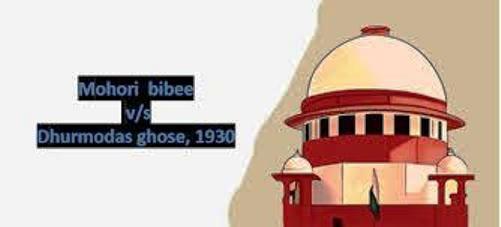🔹 Introduction to Intellectual Property (IP) Laws
Intellectual Property Laws (Intellectual Property (IP) ) laws protect creations of the mind, ensuring that inventors, artists, and businesses benefit from their innovations. IP rights are essential in a knowledge-driven economy, covering patents, copyrights, trademarks, trade secrets, and geographical indications.
Key Legislation in India:
- The Patents Act, 1970
- The Copyright Act, 1957
- The Trade Marks Act, 1999
- The Designs Act, 2000
- The Geographical Indications of Goods (Registration and Protection) Act, 1999

⚖️ Landmark Cases on Intellectual Property Laws
1️⃣ Novartis AG v. Union of India (2013) – Patent Law
- Facts: Novartis sought a patent for the cancer drug “Glivec,” but the Indian Patent Office rejected it under Section 3(d) of the Patents Act, stating it was not an innovative product.
- Judgment: The Supreme Court ruled against Novartis, stating the drug was only a modified version of an existing medicine and did not meet the “enhanced efficacy” requirement.
- Conclusion: Strengthened India’s patentability criteria, preventing “evergreening” of patents.
2️⃣ R.G. Anand v. Delux Films (1978) – Copyright Law
- Facts: A playwright claimed that a Bollywood film copied his copyrighted play.
- Judgment: The Supreme Court ruled that ideas are not copyrightable, only the expression of ideas can be protected.
- Conclusion: Reinforced the difference between ideas and expression in copyright law.
3️⃣ Yahoo Inc. v. Akash Arora (1999) – Trademark Law
- Facts: Akash Arora used the domain name “Yahoo India,” which Yahoo Inc. claimed as a trademark infringement.
- Judgment: The Delhi High Court ruled in favor of Yahoo, stating that domain names can be trademarks and confusion among users must be prevented.
- Conclusion: Established protection for domain names under trademark law.
4️⃣ Bayer Corporation v. Union of India (2014) – Compulsory Licensing
- Facts: Bayer’s patented cancer drug Nexavar was too expensive for Indian patients, and an Indian company sought a compulsory license to produce a generic version.
- Judgment: The first-ever compulsory license was granted under Section 84 of the Patents Act.
- Conclusion: Ensured access to affordable medicines, balancing patent rights and public health.
📌 Types of Intellectual Property Rights (IPR)
1️⃣ Patents – Protects new inventions (e.g., a new drug formula).
2️⃣ Copyrights – Protects literary, artistic, and musical works.
3️⃣ Trademarks – Protects brand names, logos, and symbols.
4️⃣ Trade Secrets – Protects confidential business information.
5️⃣ Geographical Indications (GI) – Protects products specific to a region (e.g., Darjeeling Tea).
❓ MCQs on Intellectual Property Laws
1. Which of the following is NOT protected under Intellectual Property laws?
a) Trademarks
b) Industrial Designs
c) Physical Property
d) Patents
✅ Answer: c) Physical Property
2. Which landmark case established that ideas are not copyrightable?
a) Novartis AG v. Union of India
b) R.G. Anand v. Delux Films
c) Yahoo Inc. v. Akash Arora
d) Bayer Corporation v. Union of India
✅ Answer: b) R.G. Anand v. Delux Films
3. Which Act governs patent laws in India?
a) The Trade Marks Act, 1999
b) The Patents Act, 1970
c) The Copyright Act, 1957
d) The Designs Act, 2000
✅ Answer: b) The Patents Act, 1970
4. The first compulsory license in India was granted for which drug?
a) Glivec
b) Nexavar
c) Paracetamol
d) Remdesivir
✅ Answer: b) Nexavar
5. What does a trademark protect?
a) Original artistic works
b) Inventions and processes
c) Logos, brand names, and symbols
d) Trade secrets
✅ Answer: c) Logos, brand names, and symbols
📘 FAQs on The Copyright Act, 1957
1. What is copyright under the Copyright Act, 1957?
Answer:
Copyright is a legal right granted to the creator of original literary, dramatic, musical, and artistic works, and to producers of cinematograph films and sound recordings. It gives the owner exclusive rights to reproduce, publish, perform, and distribute the work.
2. What types of works are protected under the Act?
Answer:
The Act protects:
-
Literary works (books, software)
-
Dramatic works (plays)
-
Musical works (composition, not sound)
-
Artistic works (paintings, sculptures)
-
Cinematograph films
-
Sound recordings
3. What is the duration of copyright protection in India?
Answer:
For literary, dramatic, musical, and artistic works: Lifetime of the author + 60 years after death.
For cinematograph films and sound recordings: 60 years from the year of publication.
4. Can copyright be transferred?
Answer:
Yes, copyright can be assigned or licensed either wholly or partially. The assignment must be in writing and signed by the assignor to be valid.
5. What constitutes copyright infringement?
Answer:
Copyright infringement occurs when someone uses the copyrighted work without permission in a manner that violates the exclusive rights of the copyright owner, such as unauthorized copying, distribution, or public performance.
6. What are the penalties for copyright infringement?
Answer:
Punishment may include:
-
Imprisonment of 6 months to 3 years
-
Fine ranging from ₹50,000 to ₹2,00,000
-
Seizure of infringing copies
-
Injunction and damages in civil suits
7. What is ‘Fair Use’ under the Act?
Answer:
Fair use (Section 52) allows limited use of copyrighted material without permission for purposes such as:
-
Private or personal use
-
Criticism or review
-
Research or education
-
Reporting of current events
8. Who administers copyright in India?
Answer:
The Copyright Office under the Ministry of Commerce and Industry administers the Act. The Copyright Board handles disputes and registration issues.
9. Is registration of copyright mandatory in India?
Answer:
No, registration is not mandatory for protection. However, it acts as prima facie evidence in court for legal claims.
10. What is the difference between copyright and trademark?
Answer:
-
Copyright protects original creative works.
-
Trademark protects brand identity, such as logos, names, or symbols used in commerce.
Summary: Intellectual Property Laws
Intellectual Property Laws (IP Laws) are a crucial branch of legal systems worldwide, designed to protect creations of the human mind. These creations—whether inventions, artistic works, symbols, names, or designs—are legally recognized as intellectual property (IP). The objective of IP laws is to reward creativity and innovation by granting creators exclusive rights over their work for a specific period.
There are four primary types of Intellectual Property:
1. Copyrights
Copyright law protects original literary, artistic, musical, and dramatic works such as books, movies, software, and paintings. The protection typically lasts for the lifetime of the author plus 60 years in India. Copyright does not protect ideas, only their expression.
2. Trademarks
A trademark is a sign, logo, name, symbol, or phrase that distinguishes goods or services of one business from another. Registering a trademark gives the owner the exclusive right to use it in commerce and to take legal action against infringement.
3. Patents
Patents provide exclusive rights to inventors for a new and useful product, process, or technical solution. A patent prevents others from making, using, or selling the invention without the patent holder’s permission. In India, patents are granted for a period of 20 years.
4. Designs and Trade Secrets
Design law protects the visual appearance of a product—like the shape, pattern, or configuration. Trade secrets, while not formally registered, protect confidential business information, such as recipes, formulas, or manufacturing methods.
Importance of IP Laws:
-
Encourage Innovation: IP laws motivate individuals and businesses to invest in research and development.
-
Economic Growth: They help creators monetize their inventions, leading to job creation and industry growth.
-
Cultural Development: Protection of creative works supports the growth of media, arts, and education.
IP Laws in India:
In India, key legislations include:
-
The Copyright Act, 1957
-
The Patents Act, 1970
-
The Trademarks Act, 1999
-
The Designs Act, 2000
-
Protection of Plant Varieties and Farmers’ Rights Act, 2001 India is also a member of international treaties like TRIPS, WIPO, and the Berne Convention.
Conclusion:
Intellectual Property Laws are vital in today’s knowledge-driven economy. They protect innovation, promote fair competition, and help maintain a balance between public and private interests in the creative world.
This guide ensures law students preparing for the All India Bar Examination (AIBE) understand Intellectual Property Laws, their key provisions, and landmark judgments. 🏛️📖⚖️



